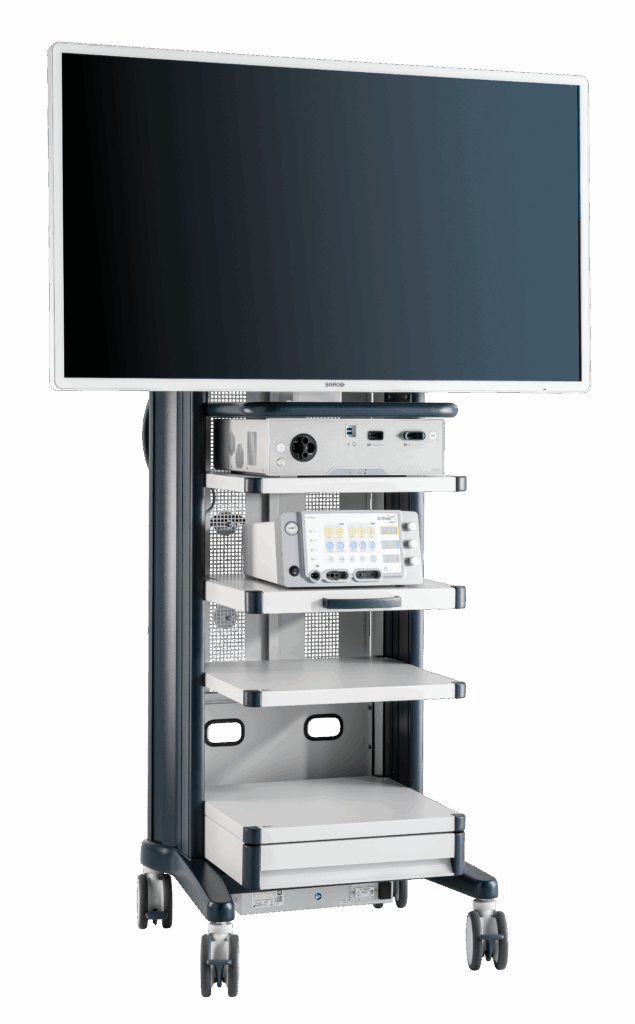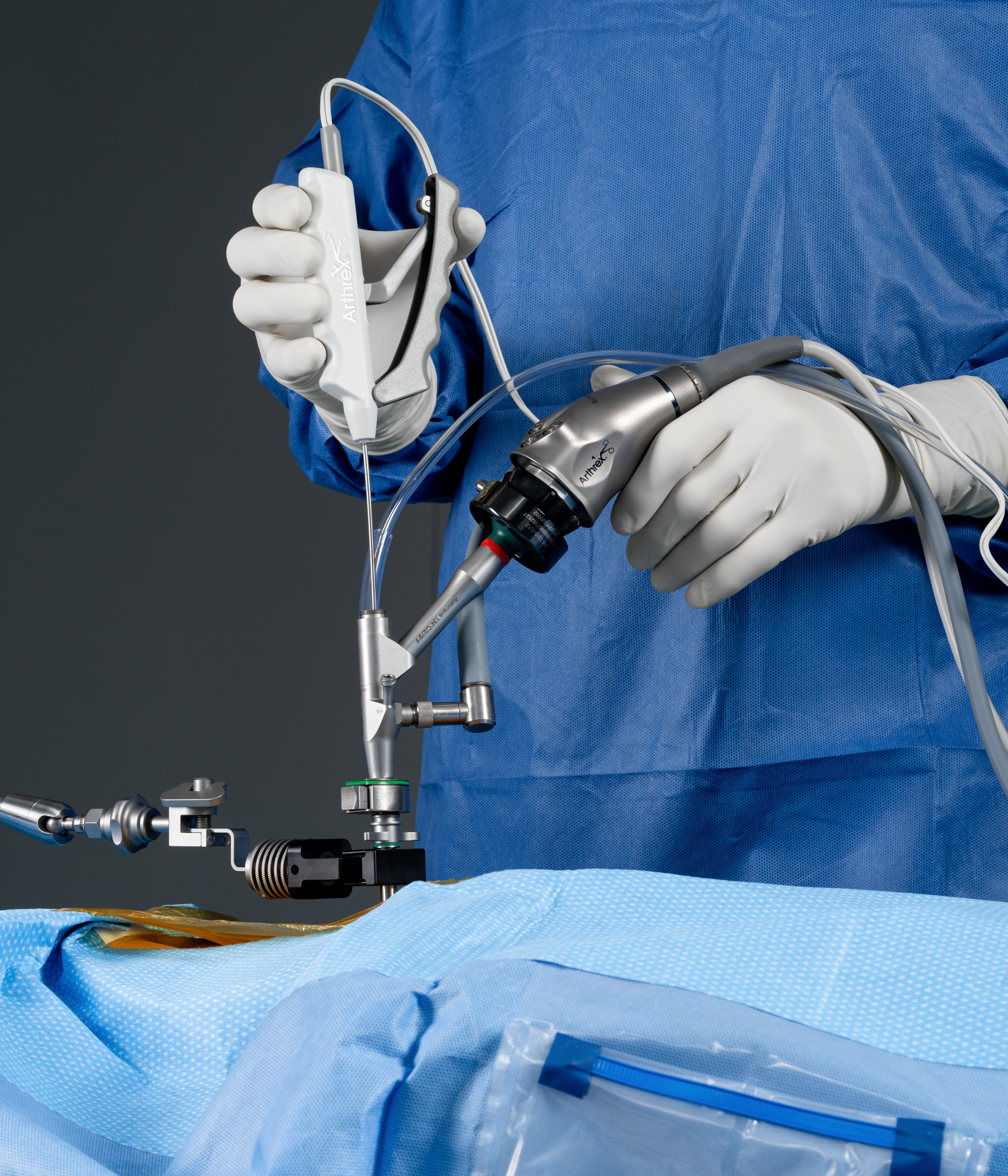Transforming Spine Surgery: The Power of Minimally Invasive Surgeries
Dr. Jack Leschke, OSMS Spine Surgeon
A common misconception about spine surgery is that it always involves large incisions, extended hospital stays, and prolonged recovery. While traditional open spine surgery remains an important and effective option in many cases, advances in technology and surgical technique have expanded the range of treatments available. One of the most exciting developments is Minimally Invasive Spine Surgery (MISS). MISS uses refined tools and smaller incisions to achieve similar goals with the potential for faster recovery, less pain, and reduced scarring. As these techniques become more widely available, they are helping to make outpatient spine surgery more accessible for patients.

What is Minimally Invasive Spine Surgery (MISS)?
Minimally invasive spine surgery (MISS) – a type of surgery performed on the spine – refers to surgical techniques that achieve the same goals as traditional open spine surgery but through smaller incisions, with less disruption to muscles and soft tissues.
When open spine surgery is performed, a long incision is made so the surgeon may pull away muscles and soft tissues to achieve easy access to the spine. This type of surgery can result in more blood loss, pain, and recovery time.
With MISS, the surgeon will make a small incision(s) in the spine, where surgery will be performed through less space and tissue disruption.

One powerful example is endoscopic spine surgery, a subtype of minimally invasive spine surgery that uses a small camera (endoscope) to visualize and treat spinal problems through a tiny hole. Endoscopic is “ultra minimally invasive” where the surgical incisions are 8 millimeters in diameter. For visual comparison, endoscopic spine surgery incisions are comparable or less than that of a dime! Very few of these patients need significant narcotic pain medications and experience a faster return to the activities they love.
Minimally invasive spine surgeries and their approaches often require minimal to no bone removal leaving the spine’s natural support system intact.
Additionally, most patients undergoing MISS can leave the surgery center or hospital on the same day or in less than 24 hours.
Causes of Needing Spine Surgery
Depending on the spine condition, and the severity for each patient, there are a few indications as to why someone may need spine surgery.
- Herniated or Bulging Discs
Surgery may be necessary when the disc material presses on the spinal nerves, causing severe pain, weakness, or numbness that doesn’t improve with conservative treatments. - Spinal Stenosis
Surgery may be necessary if nerve compression from narrowing spaces leads to back pain, leg pain, and difficulty walking (neurogenic claudication). - Degenerative Disc Disease
Surgery may be necessary when discs lose height and hydrations, spinal instability, and chronic back pain occur. - Spondylolistheses
Surgery may be necessary when misalignment of the vertebrae pinch nerves, leading to pain, numbness, and weakness. - Spinal Fractures
Surgery may be necessary when compression fractures or instability leads to significant pain and causes risk of spinal cord or nerve injury. - Spinal Infections or Tumors
Surgery may be necessary to relieve pressure on neural structures or to stabilize the spine after destructive lesions occur. - Failed Back Surgery Syndrome
Surgery may be necessary to address residual or recurrent nerve compression, scarring, or instability after prior surgeries.
How do Spinal Conditions Develop?
- Age-Related Degeneration
- Repetitive Strain & Poor Mechanics
- Injury or Trauma
- Genetic Predisposition
- Lifestyle Factors
- Underlying Medical Conditions
Types of Minimally Invasive Spine Surgery
Common types of MISS for the cervical/thoracic (upper) and lumbar (lower) spine include:
- Microdiscectomy – A microdiscectomy is a minimally invasive procedure where a small portion of a herniated disc is removed to relieve pressure on spinal nerves.
- Minimally invasive laminectomy and decompression – This procedure removes a small portion of bone (the lamina) and surrounding tissue through a small incision to relieve pressure on compressed spinal nerves, often used to treat spinal stenosis.
- Minimally invasive spinal fusion (TLIF, XLIF, ALIF, OLIF) – Spinal fusion stabilizes the spine by permanently joining two or more vertebrae using implants and bone grafts.
- Endoscopic discectomy and decompression – This ultra-minimally invasive procedure uses a small camera and specialized instruments inserted through a tiny incision to remove herniated disc material or relieve nerve compression, sometimes even performed under local anesthesia.
Technology and Robotics in Spine Surgery – Better Planning and Safety!

Advanced technologies such as robotic-assisted navigation, 3D imaging, and computer-guided instruments are enhancing precision in MISS. Robotic platforms help improve screw placement accuracy, optimize surgical planning, and reduce radiation exposure during surgery.
Robotic platforms utilize 3D imaging (such as CT scans) to create highly detailed anatomical models of a patient’s spine. Surgeons can plan optimal screw trajectories before making any incisions, ensuring ideal placement that avoids critical structures like nerves, blood vessels, and the spinal canal. During the procedure, the robotic arm helps guide instruments with sub-millimeter accuracy along the planned path, dramatically reducing the risk of misplaced screws and hardware-related complications.
Schedule an appointment to see if robotic-assisted spine surgery would be right for you.
Who are Candidates for Minimally Invasive Spine Surgery?
MISS can be for anyone who is a candidate for spine surgery. It is important to note that spine surgery of any kind at OSMS is chosen as a last resort for treatment. Surgery may be required if:
- All conservative treatments do not improve the condition
- Pain persists
- The condition has prolonged, has the potential to cause additional damage and/or is severe
Candidates for MISS typically include patients with conditions such as herniated discs, spinal stenosis, spondylolisthesis and some cases of spinal instability.
How Long does Minimally Invasive Spine Surgery Take?
Procedure times for MISS vary based on the complexity of each case but typically range from 45 minutes to 2 hours. Endoscopic procedures can be even shorter for select cases, whereas fusions can be longer. Prior to surgery, the surgery team and physician will disclose patients with information regarding their surgery, including the approximate length of their surgery.
How Long does it Take to Recover from Minimally Invasive Spine Surgery?
After surgery, the incision site will be stitched up with dissolvable stitches. Patients can expect the incision site to heal within 2-6 weeks where no dressings or additional care is required while recovering. Once the incision has healed, patients will be left with a small scar that is less than an inch long.
Many patients can return to light activities within a few days to weeks, and more strenuous activities by 6 to 12 weeks, depending on the specific procedure and individual health factors.
All patients will be disclosed with information and instructions regarding their recovery and what they can expect to accomplish each week as they recover. Physical therapy and performing exercises assigned to a patient by their physical therapist is a crucial part of the healing and recovery process. This step towards recovery should not be neglected.

Success Rates and Risks of Minimally Invasive Spine Surgery
With any surgery, it is understandable to have concerns regarding the risks and outcomes of the surgery being performed. Success rates for MISS are generally comparable to open surgery, with a high likelihood of success. Risks, though lower overall, include nerve injury, infection, hardware failure, or the need for revision surgery.
What is the Cost of Minimally Invasive Spine Surgery and is it Covered by Insurance?
The cost of minimally invasive spine surgery can vary widely based on location, facility, and specific procedure but most are covered by insurance.
Insurance plans accepted at OSMS: Insurance Coverage
Minimally Invasive Spine Surgery represents an important advancement in the field of spinal care. By utilizing smaller incisions and advanced technologies, MISS offers patients faster recovery, reduced pain, and fewer complications compared to traditional open spine surgery.
If you’re suffering from back pain, or are a candidate for spine surgery, schedule an appointment at OSMS. Let our experts in spine care evaluate you and determine what the best treatment option is for you, your condition and your lifestyle.
References/Citations:
- Lee LY, Idris Z, Beng TB, Young TY, Chek WC, Abdullah JM, Hieng WS. Outcomes of Minimally Invasive Surgery Compared to Open Posterior Lumbar Instrumentation and Fusion. Asian J Neurosurg. 2017 Oct-Dec;12(4):620-637. doi: 10.4103/ajns.AJNS_331_16. PMID: 29114274; PMCID: PMC5652086.
- Minimally invasive spine surgery. Cleveland Clinic. (2024, June 6). https://my.clevelandclinic.org/health/treatments/17235-minimally-invasive-spine-surgery
- Mobbs RJ, Phan K, Malham G, et al. “Minimally invasive surgery compared to open spinal fusion for the treatment of degenerative lumbar spine pathologies.” Journal of Spine Surgery. 2015;1(2):142-150. doi:10.3978/j.issn.2414-469X.2015.10.05
- Wang MY, Green BA, Levi AD. “Minimally invasive surgery for thoracolumbar spinal deformity: initial clinical experience with clinical and radiographic outcomes.” Neurosurgical Focus. 2010;28(3):E9. doi:10.3171/2010.1.FOCUS09288
- Wu RH, Fraser JF, Härtl R. “Minimal access versus open transforaminal lumbar interbody fusion: meta-analysis of fusion rates, subsidence, complications, and learning curve.” World Neurosurgery. 2010;74(4-5):510-517. doi:10.1016/j.wneu.2010.07.007
- Yang, Z., Wang, H., Li, W., & Hu, W. (2022). Comparative effects and safety of full-endoscopic versus microscopic spinal decompression for Lumbar Spinal Stenosis: A meta-analysis and statistical power analysis of 6 randomized controlled trials. Neurospine, 19(4), 996–1005. https://doi.org/10.14245/ns.2244600.300









